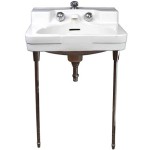Bathroom Without Windows Plants: Bringing Life and Light to a Windowless Space
Bathrooms, often designed for functionality and privacy, can sometimes lack the natural light and vibrancy that other rooms in a home enjoy. However, with the right plants, you can transform a windowless bathroom into a serene and refreshing oasis. Certain plants thrive in the humid, dimly lit conditions typical of bathrooms, adding a touch of nature and life to this often-overlooked space.
Key Considerations for Choosing Plants
Before introducing plants to your bathroom, it's essential to consider specific factors that will ensure their well-being and longevity. The most crucial aspect is determining the light levels available in your windowless bathroom. Artificial lighting can provide some light, but it's crucial to select plants that can tolerate low light conditions.
Another important factor is humidity. Bathrooms are naturally humid environments, which is beneficial for many plants. However, some plants are more susceptible to excessive humidity, leading to root rot or fungal diseases. Therefore, choosing plants that can tolerate fluctuations in humidity is important.
Finally, consider the size and layout of your bathroom. While a large bathroom can accommodate larger plants, a smaller space may require smaller options. The placement of plants is also vital, ensuring they receive adequate light and air circulation.
Best Plants for Windowless Bathrooms
Numerous plant options thrive in the unique conditions of a windowless bathroom. Here are some popular choices known for their low-light tolerance and adaptability to moderate humidity:
1. Snake Plant (Sansevieria trifasciata)
The snake plant, also known as the "mother-in-law's tongue," is an incredibly resilient and low-maintenance option. It can tolerate very low light and infrequent watering, making it ideal for even the darkest bathrooms. Snake plants are also air-purifying, removing toxins such as formaldehyde from the environment.
2. ZZ Plant (Zamioculcas zamiifolia)
The ZZ plant, known for its glossy, dark green foliage, is another exceptional choice for low-light conditions. It can tolerate extreme neglect and infrequent watering, making it a perfect option for those who travel frequently. ZZ plants are also drought-tolerant, making them less susceptible to overwatering, a common issue in humid environments.
3. Peace Lily (Spathiphyllum)
The peace lily, known for its elegant white flowers, adds a touch of elegance to any bathroom. It thrives in moderate to low light conditions and prefers consistently moist soil. The peace lily is also an excellent air purifier, removing toxins such as ammonia and benzene from the air. However, it is important to note that peace lilies are toxic to pets and should be kept out of reach.
4. Cast Iron Plant (Aspidistra elatior)
True to its name, the cast iron plant is incredibly resilient and can tolerate a wide range of conditions. It can handle low light, infrequent watering, and even neglect, making it a perfect choice for busy homeowners. Cast iron plants also purify the air, removing pollutants such as formaldehyde and xylene.
5. Spider Plant (Chlorophytum comosum)
The spider plant is a popular choice for its ease of care and its ability to produce "spiderettes" or baby plants that can be easily propagated. It prefers moderate light but can tolerate low light conditions. Spider plants also have air-purifying properties, removing pollutants such as formaldehyde and carbon monoxide.
Caring for Bathroom Plants
While these plants are relatively low-maintenance, providing them with the right care will ensure their optimal health and well-being. Here are some essential tips for caring for your bathroom plants:
1. Watering:
Water your plants only when the top inch of soil feels dry to the touch. Avoid overwatering, as this can lead to root rot, especially in humid environments. Allow excess water to drain away after watering to prevent soggy soil.
2. Light:
Ensure your plants receive adequate light, even if it's artificial. Consider adding a grow lamp to supplement the natural light in your bathroom, especially during the winter months.
3. Humidity:
Most bathroom plants thrive in the humidity of a bathroom. However, if you notice any signs of fungal diseases, such as leaf spots or mold, consider reducing the humidity by increasing ventilation or using a dehumidifier.
4. Pests and Diseases:
Regularly inspect your plants for pests and diseases. Common pests include spider mites, scale, and mealybugs. If you spot any pests, treat them with a pesticide or insecticidal soap. Fungal diseases can be treated with fungicides.
By introducing the right plants and providing them with proper care, you can create a vibrant and refreshing atmosphere in your bathroom, transforming it into a sanctuary of nature and tranquility.

Best Plants For The Bathroom Office Indoor

13 Of The Best Plants For Bathrooms Delineate Your Dwelling

12 Plants That Have No Problem Growing In A Windowless Bathroom Wild Creative Project

9 Best Plants For Bathrooms Without Windows In 2024 Bathroom Decor

The Best Houseplants To Put In Your Bathroom If You Ve Got No Windows They Also Purify Air And Reduce Mould Sun

The Best Houseplants To Put In Your Bathroom If You Ve Got No Windows They Also Purify Air And Reduce Mould Sun

Plants For Bathrooms Without Windows Or Low Light Altifarm Enverde

Carlos A Cabrera On Linkedin Interiordesign Bathroom

What Plants Can You Grow In Rooms Without Windows Ourhouseplants

Plants In The Bathroom Est Way To Decorate Tidy Windowless
Related Posts







